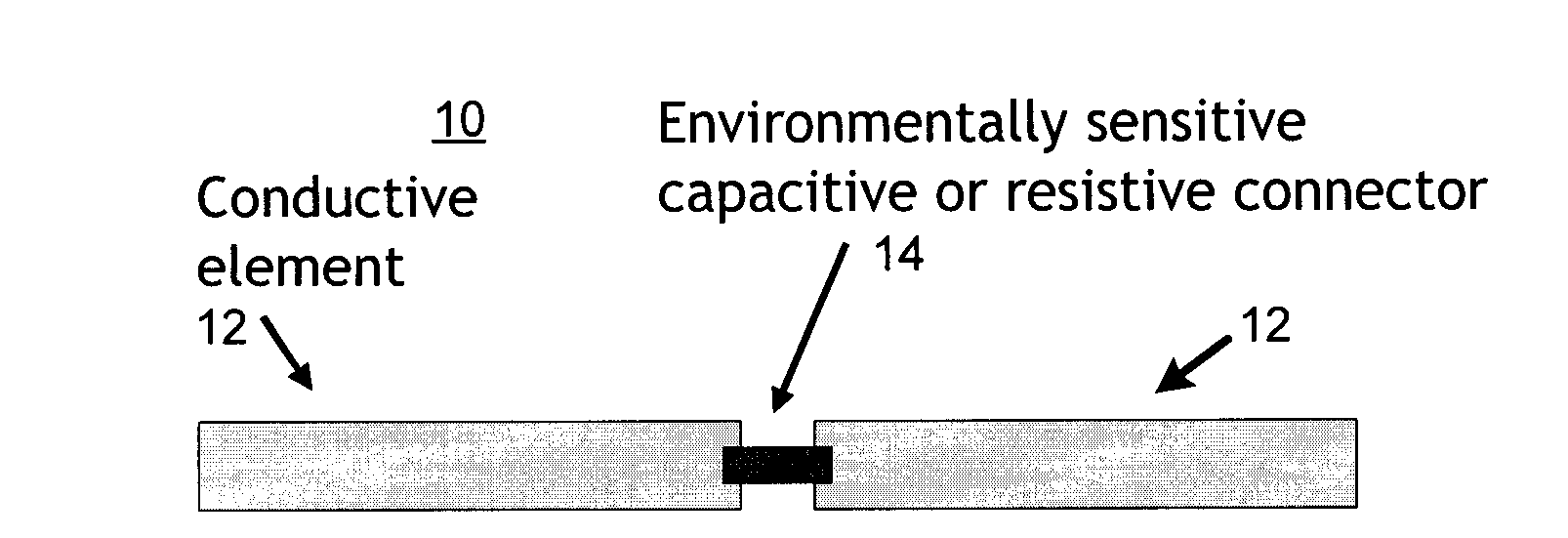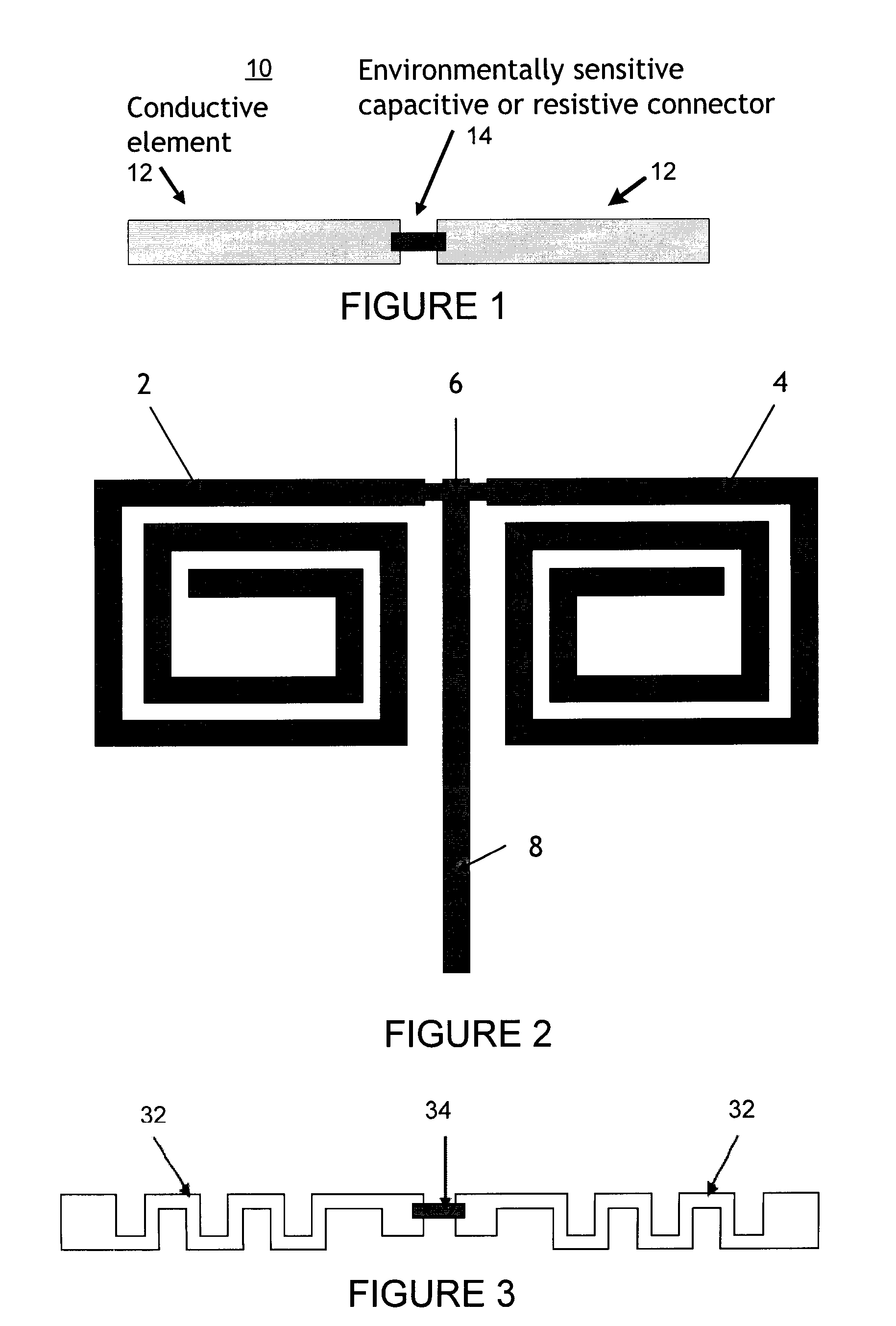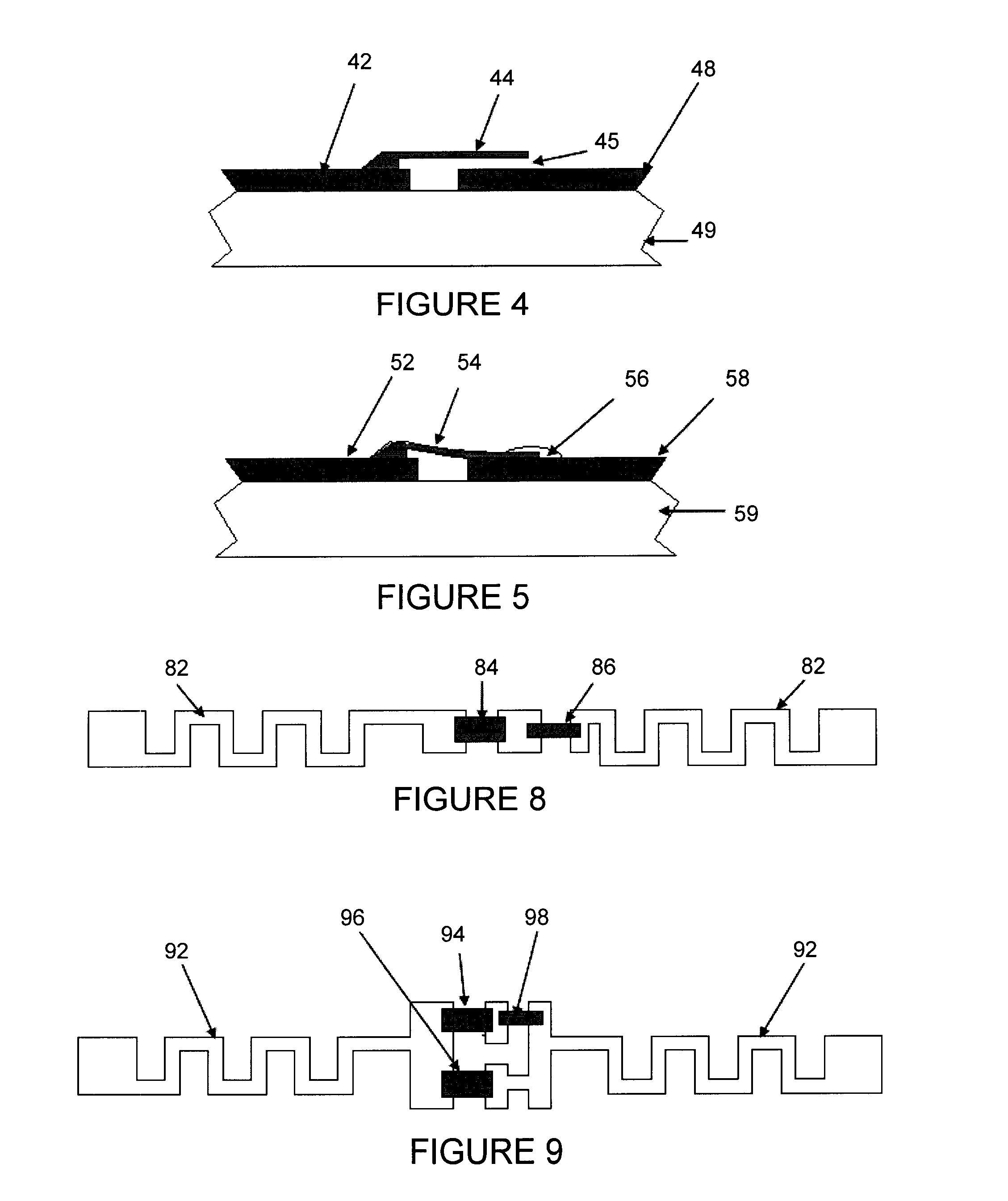Environmentally sensitive reconfigurable antenna
a reconfigurable antenna and environment-friendly technology, applied in the field of antenna systems, can solve the problems of affecting the operation of the resonant antenna, the resonant antenna is easily blocked by typical obstructions, and the transmission of data is expensive, so as to achieve the effect of modifying the resonance and electromagnetic radiation properties
- Summary
- Abstract
- Description
- Claims
- Application Information
AI Technical Summary
Benefits of technology
Problems solved by technology
Method used
Image
Examples
second embodiment
[0036]In the chemically sensitive reconfigurable antenna 210, the connector (14, FIG. 1) is made from a first conductive material in close proximity to a second conductor, forming a capacitor. The first conductive material is coated by a chemically reactive surface designed to adsorb specific biological or chemical species. When the new species are adsorbed, the first conductor experiences a stress and changes its position with respect to the second conductor, thereby changing the capacitance of the antenna connector, and changing the radiation properties of the antenna. In some cases, the moving conductor can form a complete electrical connection, so that the coupling becomes a completed circuit.
third embodiment
[0037]In the chemically sensitive reconfigurable antenna 210, the sensing element can be made with a material that corrodes in the presence of the chemical of biological species of interest. The material can be conductive or dielectric, and it can form a capacitive or resistive bridge between two or more conductors in the antenna. The presence of certain chemical or biological species causes the material to corrode, thereby changing the capacitance or resistance of the connector. In some cases the corroded material can allow a spring loaded element to short or open between two conductors.
[0038]The use of multiple capacitive elements with different chemical affinities can be used to monitor multiple chemical species. The connectors can be placed strategically at different points on the antenna. In this way, a single antenna can be used to monitor multiple chemical and biological species at once. Furthermore, the signal for different chemical and biological detections shows up as diff...
PUM
 Login to View More
Login to View More Abstract
Description
Claims
Application Information
 Login to View More
Login to View More - R&D
- Intellectual Property
- Life Sciences
- Materials
- Tech Scout
- Unparalleled Data Quality
- Higher Quality Content
- 60% Fewer Hallucinations
Browse by: Latest US Patents, China's latest patents, Technical Efficacy Thesaurus, Application Domain, Technology Topic, Popular Technical Reports.
© 2025 PatSnap. All rights reserved.Legal|Privacy policy|Modern Slavery Act Transparency Statement|Sitemap|About US| Contact US: help@patsnap.com



